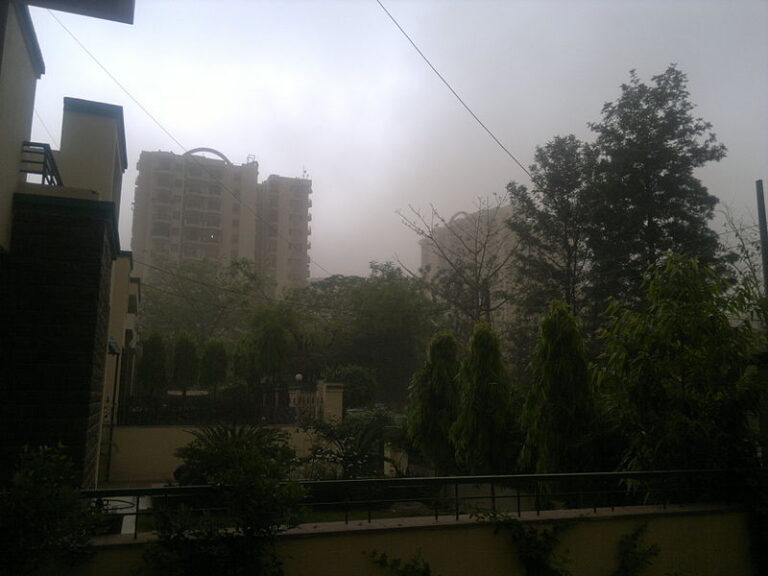
Numerous lives have been lost in the disaster, which came almost a year after similar high-velocity storms killed more than 127 people in northern parts of India. Almost fifty fatalities have been reported from four states according to Scroll.in. Rajasthan has reported the most deaths, with 21 people losing their lives. Fifteen people are believed to have been killed in Madhya Pradesh; ten have died in Gujarat; and three fatalities have been reported from Maharashtra.

““A western disturbance…likely to affect the western Himalayan region and northwest India from April 15 and cause enhanced rainfall activity with probable thundersqualls and hailstorms.””
Thunderstorms and dust storms had earlier been forecast across swathes of north and northwestern India by the Indian Meteorological Department (IMD). They warned of “a western disturbance…likely to affect the western Himalayan region and northwest India from April 15 and cause enhanced rainfall activity with probable thundersqualls and hailstorms.”
An IMD official told The Hindustan Times that the storms are caused by a “Western disturbance and winds with moisture from Arabian sea and Bay of Bengal are developing this kind of weather conditions. Gusty winds are causing dust [storms] mainly in Western parts of the state because the soil is loose and there is lack of moisture there.”
In a tweet, the Prime Minister’s Office stated that Prime Minister Modi “has expressed grief at the loss of lives due to unseasonal rains and storms in MP, Rajasthan, Manipur and various parts of the country”, adding that “the government is doing its best to provide all possible assistance to those affected.” The PMO subsequently announced that “an ex- gratia of Rs 2 lakh each for the next of kin of those who lost their lives due to unseasonal rain and storms in MP, Rajasthan, Manipur and various parts of the country has been approved from the PM’s National Relief Fund. Rs 50,000 each for the injured has also been approved.” A similar relief measure for those affected in Gujarat had earlier been announced.

“Recent years have seen much more violent dust storms incurring much higher death tolls: unusually high temperatures and abundant moisture in the air converged last year to intensify the velocity of winds and the intensity of the storms. A similar situation is likely to be the case with this year’s storms.”
The Prime Minister himself tweeted “we stand in solidarity with all those affected due to unseasonal rainfall and storms in various parts of the country.” He had come under flak from Congress after earlier tweets mentioned relief measures for and offered condolences only to Gujarat and not other affected states. Chief Minister of Madhya Pradesh Kamal Nath rebuked the Prime Minister, stating “you are the Prime Minister of the country, not ony Gujarat’s.”
As previously reported by Health Issues India, “dust storms are a normal part of India’s climate in the summer months. They usually pass with…little incident. The death toll rarely exceeds a dozen or so.” However, recent years have seen much more violent dust storms incurring much higher death tolls: unusually high temperatures and abundant moisture in the air converged last year to intensify the velocity of winds and the intensity of the storms. A similar situation is likely to be the case with this year’s storms.
Going forward, India’s rising temperatures – caused by the effects of climate change – could lend themselves to greater instability in India’s atmosphere. Climate change is likely to result in further disastrous climatic weather events – not only dust storms, but also flooding and heat waves. The dust storms occur not in a vacuum, but as part of a long-standing and ongoing trend of environmental decline facilitating catastrophe. When Indian students strike for climate, events like the country’s dust storms make it clear what they are marching for: their lives.

